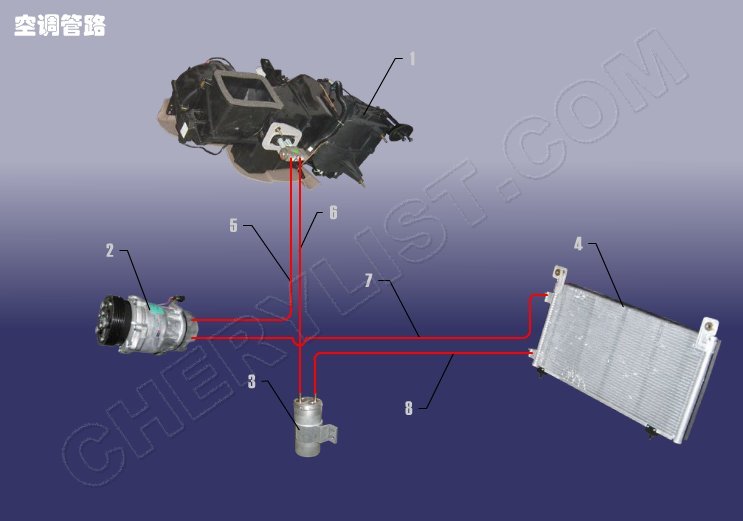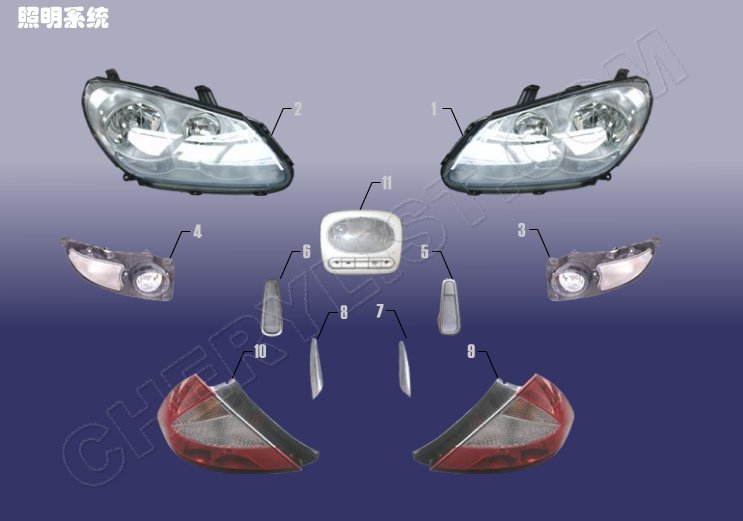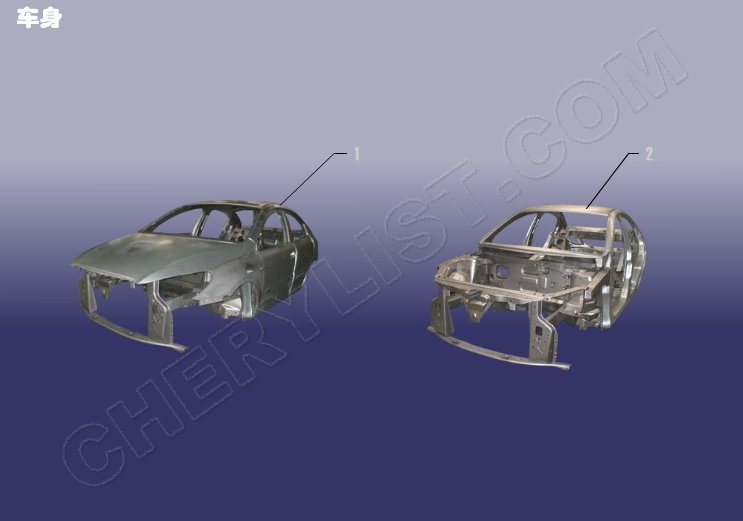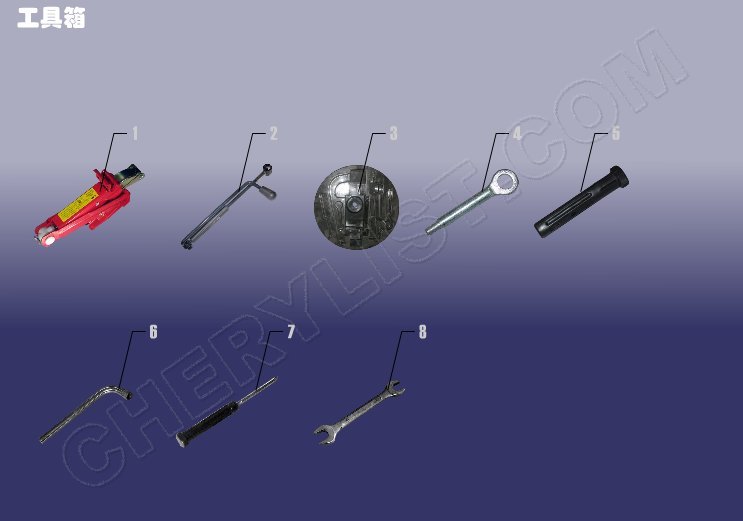481 Engine Assy IGNITON SYSTEM for CHERY A1 KIMO S12
1 A11-3707130GA SPARK PLUG CABLE ASSY – 1ST CYLINDER
2 A11-3707140GA CABLE – SPARK PLUG 2ND CYLINDER ASSY
3 A11-3707150GA SPARK PLUG CABLE ASSY – 3RD CYLINDER
4 A11-3707160GA SPARK PLUG CABLE ASSY – 4TH CYLINDER
5 A11-3707110CA SPARK PLUG ASSY
6 A11-3705110EA IGNITION COIL
7 Q1840650 BOLT – HEXAGON FLANGE
8 A11-3701118EA BRACKET – GENERATOR
9 A11-3701119DA SLIDE SLEEVE – GENERATOR
10 A11-3707171BA CLAMP – CABLE
11 A11-3707172BA CLAMP – CABLE
12 A11-3707173BA CLAMP – CABLE
Ignition system is an important part of engine. Over the past century, the basic principle of ignition system has not changed, but with the progress of technology, the method of generating and distributing sparks has been greatly improved. Automobile ignition system is divided into three basic types: with distributor, without distributor and cop.
Early ignition systems used fully mechanical distributors to provide sparks at the right time. Then, a distributor equipped with solid-state switch and ignition control module was developed. Ignition systems with distributors were once popular. Then a more reliable all electronic ignition system was developed without distributor. This system is called distributor less ignition system. Finally, it has created the most reliable electronic ignition system so far, namely cop ignition system. This ignition system is controlled by computer. Have you ever thought about what happens when you insert the key into the vehicle ignition, turn the key, and the engine starts and continues to run? In order for the ignition system to operate normally, it must be able to complete two tasks at the same time.
The first is to increase the voltage from 12.4V provided by the battery to more than 20000 volts required to ignite the air and fuel mixture in the combustion chamber. The second job of the ignition system is to ensure that the voltage is delivered to the right cylinder at the right time. For this purpose, the mixture of air and fuel is first compressed by the piston in the combustion chamber and then ignited. This task is performed by the engine’s ignition system, which includes battery, ignition key, ignition coil, trigger switch, spark plug and engine control module (ECM). The ECM controls the ignition system and distributes energy to each individual cylinder. The ignition system must provide enough spark on the right cylinder at the right time. The slightest mistake in time will lead to engine performance problems. The automobile ignition system must produce enough sparks to break through the spark plug gap. For this purpose, the ignition coil can act as a power transformer. The ignition coil converts the low voltage of the battery into the thousands of volts required to produce an electric spark in the spark plug to ignite the air and fuel mixture. In order to produce the necessary spark, the average voltage of the spark plug must be between 20000 and 50000 v. The ignition coil is made of two coils of copper wire wound on the iron core. These are called primary and secondary windings. When the trigger switch of the vehicle’s ignition system turns off the power supply of the ignition coil, the magnetic field will collapse. Worn spark plugs and faulty ignition components can degrade engine performance and can lead to a variety of engine operating problems, including failure to ignite, lack of power, poor fuel economy, difficult starting, and check engine lights on. These problems may damage other key vehicle components. In order to make the car run smoothly and safely, regular maintenance of the ignition system is essential. Visual inspection shall be carried out at least once a year. All components of the ignition system should be inspected regularly and replaced when they begin to wear or fail. In addition, always check and replace spark plugs at intervals recommended by the vehicle manufacturer. Do not wait for problems to occur before servicing. This is the key to prolong the service life of vehicle engine









